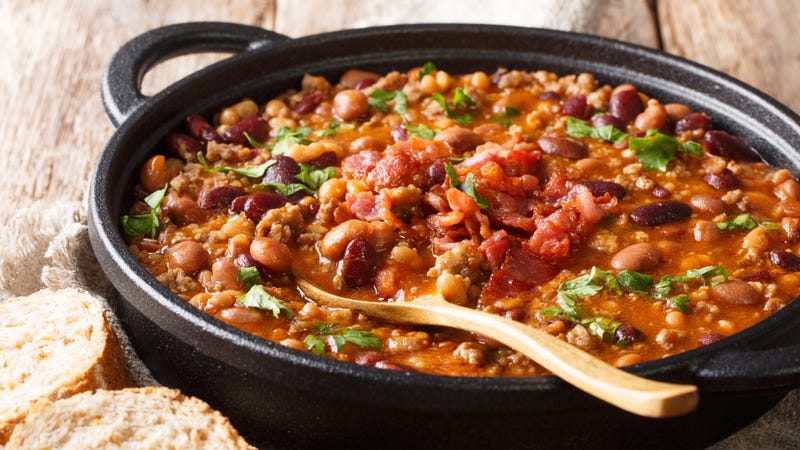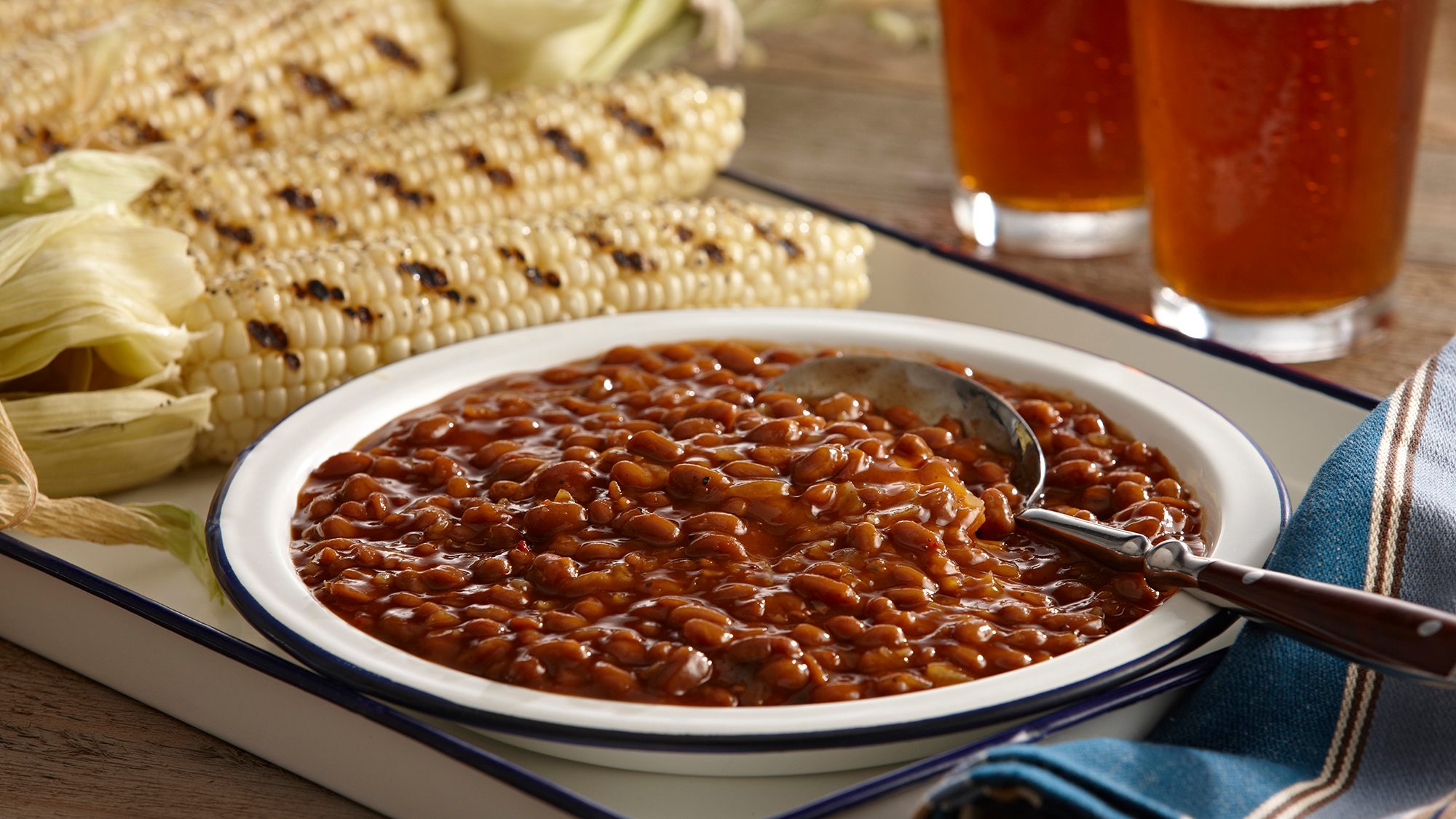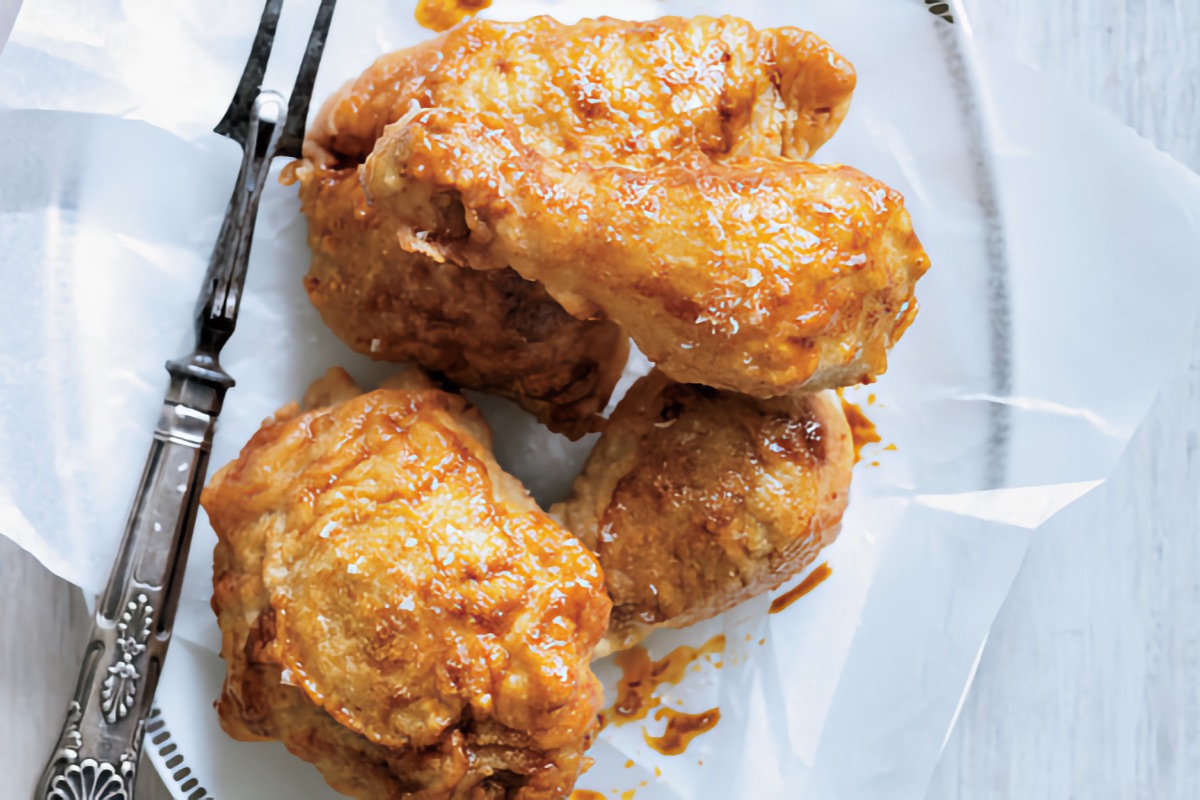It is a great time to be a bean, or, more accurately, a purveyor of beans. In addition to the popularity of a certain exclusive bean club, current conditions have made beans—both dried and canned—a sought-after item.
Beans are not hard to prepare. They’re not even hard to prepare well, but some strategies are more successful than others. Luckily, we here at Skillet really like beans, and we have many bean-related tips, tricks, and recipes.

Photo: Claire Lower
Soak ‘em if you’ve got ‘em
Waiting is not fun, especially if the thing I’m waiting for is supper. Keeping a supply of soaked beans in your fridge at all times drastically shortens your bean cooking time, which means you can have a meal on the table in less than hour:
All you have to do is place your beans in a bowl, cover them with a couple inches of cold water, and, if you like, stir in some salt. (I do, and I use half a teaspoon per quart of water.) Cover tightly with plastic wrap and refrigerate for up to three days, though I suspect they’ll keep for even longer. Should you forget about your beans for the better part of a work week, as I have, a quick sniff check will ease your mind. As long as they smell okay, the only difference you’ll notice is in the cooking time.
If—heaven forbid—you blast through your supply of soaked beans, do not cry. You can always use your Instant Pot, or try the 90-minute “no soak” method. It’ll take a little longer, but that just gives you an excuse to have a snack.
Love them tender
I like my beans obscenely tender; if beans had bones, I would want their flesh to fall off of them. The aforementioned soaking helps speed up the cooking process, but real bean heads know the alkaline environment of a clay pot is what produces a truly tender bean. Even if you don’t have such a pot, you can create a similar pH by adding a literal pinch of baking soda to your bean batch:
It really works: even a measly 1/8th of a teaspoon added at the beginning of cooking noticeably softens those bean skins, something can take a long time to achieve—especially if yours sat around for a while before cooking. Depending on how much baking soda you add—and when you add it—you can take the tenderizing power of baking soda even farther. I recently soaked some dry chickpeas overnight with an entire teaspoon of baking soda and a good amount of salt. Before cooking, I drained the soaking water and added another half-teaspoon or so of baking soda to the cooking liquid. They cooked up super tender but also, uh, mostly nude; the skins slipped right off and partially dissolved. We already know this technique is great for hummus, but I bet it would also make for the creamiest refried beans ever. (I used my naked chickpeas in soup, like a total chump.)
Treat them like pasta
Staying inspired can be a challenge, but beans are just as versatile as a bowl of noodles. If you would put it on pasta, you can put it on a bean:
In terms of sauce pairings, each bean brings its own character to a dish, and there aren’t really any bad combinations. A flageolet bean with a roasted tomato sauce is going to play very differently than a garbanzo or giant Royal Corona (an absolute unit of a white bean), but all will play well. Even the creamy lima bean—an unfairly oft maligned legume—is delicious with such a sauce. If choosing a bean for your sauce feels a little overwhelming, start with a cannellini. Originally from Italy, the common white bean will meld with any sauce you throw at it. If you want to try a more adventurous bean, start with a simple tomato sauce or the aforementioned cacio e pepe, note how the flavors interact with the sauce, then branch out to more adventurous sauces like a vodka sauce, carbonara, pesto, or the combination of sardines, breadcrumbs, fennel, and raisins you’ll find in pasta con le sarde. I’m personally looking forward to trying a black eyed pea puttanesca, as I think the meaty bean can hold its own in a bowl with garlic, capers, and anchovies.
In addition to being a great vehicle for sauces, beans can also become the sauce. Just cook some chickpeas with lots of aromatics, then puree them with their cooking liquid until they are silky smooth.
You can use canned
Canned beans get a lot of hate, particularly from members of that fancy bean club, but they just need a little tweaking to shine. We have an entire guide on the subject, but I’m a big fan of simmering canned beans in olive oil with lots of herbs and spices:
Drain your beans—I like navy beans for this—and add them to a pan with enough olive oil to just cover them. Add in a few cloves of garlic, some salt (depending on how much your beans were seasoned in the can), and your favorite herbs (rosemary, thyme, and tarragon are mine), and simmer them over medium heat until they’re warmed through. The creamy, flavor-infused legumes are then ready for mixing into a simple pasta, or enjoyed on a thick pieced of toast with some wilted greens.
Actually, you don’t even have to heat the oil to make a more luxurious bean—a quick marinade can also work wonders.
Photo: McCormick
Embrace the black-eyed pea
In my southern heart, the black-eyed pea is second only to the lima, a perfect bean that I don’t do much to. (I like my limas with a little butter and salt—that’s it.) Unlike the lima, however, I have found black-eyed peas to be insanely versatile. They make a great hummus and can be refried for a terrific dip or side, but my favorite application for them is this ridiculously easy three-ingredient “stew” that slaps way harder than it has any right to:
It’s the ultimate lazy pantry supper. I almost feel bad calling it a “stew,” as it doesn’t stew for that long. All you need is a can of black eyed peas, a couple of canned plum tomatoes, and a tablespoon of butter, plus whatever seasonings you feel like adding. If you have some leftover roasted vegetables or grains, throw those in too; everyone is invited. The juice from the tomatoes mixes with the butter to create a rich, savory broth, prefect for sopping up with hearty bread. It comes together in less than 15 minutes, is super hearty, and tastes way more time-intensive than it is.
Could you use a different legume? Probably, but the extra savory, almost meaty quality of the black eyed pea is what—in my opinion—really makes the dish.
Do not ignore the liquid
Much like pasta water, the liquid from a pot of beans is full of helpful starches and proteins. You can use it to emulsify a sauce, or you can blitz it with some whole, cooked beans to make a (vegan) gravy (a technique that black and southern cooks have employed for some time now):
You can and should try this with any bean and any fat. The possibilities are seemingly endless: Black beans with sour cream and a bit of lime juice, white beans with brown butter and sage or rosemary, kidneys with coconut milk and warm spices, or pintos with bacon fat and a splash of beer all sound pretty damn good to me. The next time you cook a big pot of beans, scoop out a cup each of beans and their cooking liquid, add 3 or 4 tablespoons of fat, and purée with a blender. Season to taste, pour over your rice and beans, and be amazed at just how luxurious a bowl of beans can be.
Chickpeas are especially valuable here, as their cooking liquid can be used as a surprisingly savory, golden broth. If you use canned chickpeas, the liquid can be used as a vegan egg substitute (even in cocktails!).
How have you all been cooking your beans, and what are your favorite bean tricks? Does anyone else love limas as much as I do?
This article was written by Claire Lower on Skillet and shared by Claire Lower to Lifehacker from Lifehacker and was legally licensed through the NewsCred publisher network. Please direct all licensing questions to legal@newscred.com.







